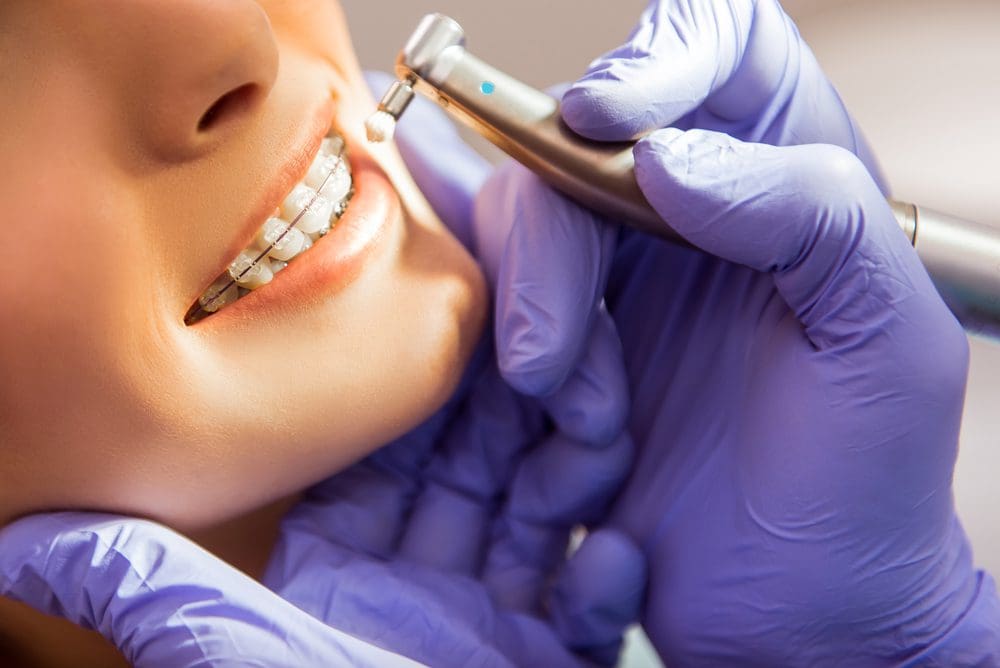Comprehensive Guide to Orthodontics Treatments for Dealing With Oral Misalignments
Understanding the ins and outs of each treatment, including their devices, benefits, and possible drawbacks, is critical in making informed choices about one's orthodontic therapy. As we navigate with the thorough guide to orthodontic treatments for remedying oral misalignments, the detailed details of each technique will certainly unfold, dropping light on the path towards a unified and functional dental placement.
Orthodontic Procedures Summary

Along with typical dental braces and clear aligners, orthodontists may likewise recommend various other treatments like headgear, palatal expanders, or retainers to attend to certain placement concerns (cumming orthodontics). These treatments are customized per person's distinct requirements and might include a combination of treatments to attain the preferred results. Normal changes and surveillance are crucial components of orthodontic therapy to make sure development gets on track and to make any kind of needed adjustments in the process. By going through orthodontic procedures, individuals can not just accomplish a straighter smile but additionally enhance their general oral wellness and feature.
Standard Braces: Just How They Work
When considering orthodontic therapies for dental imbalances, traditional braces stick out as a reliable method for fixing teeth positioning. Typical braces include brackets, cables, and bands that interact to use continuous pressure on the teeth, slowly relocating them right into the wanted placement. The braces are affixed to the teeth making use of an unique adhesive, and the wires are threaded through the brackets. By adjusting the tension of the cables, orthodontists can manage the instructions and force applied to each tooth, directing them into proper positioning in time.
As stress is applied to the teeth via the dental braces, the bone bordering the teeth is improved to support the brand-new tooth positions. People will require normal modifications at the orthodontist's workplace to make sure the braces proceed to apply the right stress for effective teeth activity.
Unnoticeable Aligners: Disadvantages and pros
These clear, tailor-made trays are basically invisible when used, making them an attractive option for individuals seeking an extra aesthetically pleasing orthodontic therapy. Clients can eliminate the aligners before consuming or cleaning their teeth, reducing the risk of food getting stuck in the device and simplifying the cleansing procedure.

Surgical Orthodontic Options
Surgical interventions in orthodontics existing practical options for resolving complicated teeth straightening dental imbalances that may not be properly solved through standard orthodontic treatments. While unseen aligners and conventional dental braces can fix several orthodontic problems, particular cases call for surgical treatment to achieve ideal outcomes. Surgical orthodontic options are commonly recommended for extreme malocclusions, significant jaw disparities, and cases where the underlying bone structure requires modification to accomplish appropriate alignment.
One usual surgical orthodontic procedure is orthognathic surgery, which includes rearranging the jaws to remedy practical problems such as trouble chewing or speaking. This surgical procedure is commonly done in collaboration with an orthodontist that aids align the teeth before and after the procedure. Surgical orthodontics may likewise include treatments to reveal impacted teeth, eliminate excess periodontal cells, or improve the jawbone to develop an extra unified facial profile.
Prior to taking into consideration medical orthodontic alternatives, people undergo a comprehensive assessment to figure out the necessity and prospective benefits of such interventions. cumming braces. While surgical procedure might appear difficult, it can significantly improve both the function and visual appeals of the smile in cases where conventional orthodontic therapies drop short
Retainers and Post-Treatment Treatment

Failure to abide with post-treatment care directions can result in relapse, where the teeth gradually relocate back towards their initial placements. Consistent retainer wear, great dental hygiene, and normal dental examinations are vital for preserving the outcomes achieved via orthodontic surgical procedure and making sure the long-lasting security of the corrected oral alignment.
Final Thought
In verdict, orthodontic treatments provide numerous alternatives for dealing with oral imbalances. Surgical orthodontic alternatives are available for extra severe misalignments. In general, orthodontic treatments can properly boost oral wellness and visual learn the facts here now look.
As we browse via the thorough overview to orthodontic procedures for fixing dental misalignments, the intricate details of each technique will certainly unravel, dropping light on the path towards a unified and practical oral positioning. - cumming orthodontist
One of the most typical orthodontic therapies is the use of braces, which are composed of metal brackets and cords that apply gentle pressure to gradually move teeth right into the preferred position.When considering orthodontic therapies for dental imbalances, conventional braces stand out as a reliable technique for fixing teeth positioning. Additionally, invisible aligners may not be ideal for intricate orthodontic issues that call for even more significant teeth activity, as they are normally recommended for light to modest cases. Retainers are personalized orthodontic gadgets created to hold teeth in their corrected placements after the completion of orthodontic therapy.